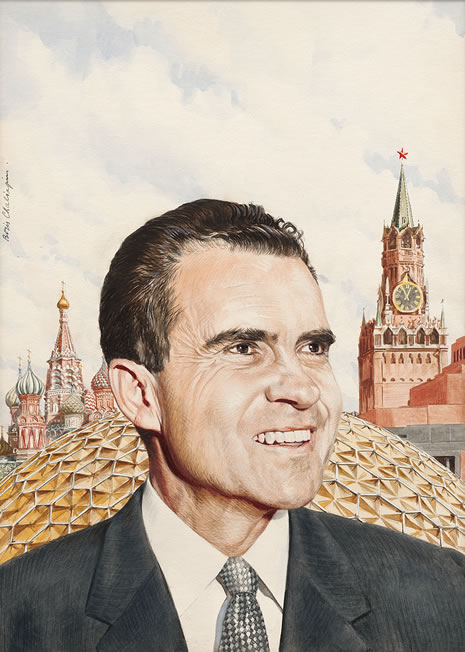From the Kitchens of America, Happy 100th Birthday to President Richard M. Nixon

The thirty-seventh president of the United States, Richard Milhous Nixon (1913–1994), was born in Yorba Linda, California, on this date, January 9. After attending Whittier College and Duke University law school, Nixon began his service to his country in World War II. After the war, he rose through the ranks of American politics, serving in the House of Representatives, the United States Senate, as vice president, and ultimately as president.
Nixon was Dwight Eisenhower’s choice for a running-mate in 1952. Although he was only thirty-nine years old, Nixon’s public exposure had increased during his time on the House Un-American Activities Committee. Riding this wave propelled him to the Senate in 1950 and to the second spot on the Republican ticket with the immensely popular Ike.
Though the Cold War continued to spread ice over the United States’ relations with the Soviet Union during the Eisenhower administrations, Vice President Nixon chose to illustrate the sublime American lifestyle in an interesting exchange with Soviet Premier Nikita Khrushchev. Pitting the standards of American living against those of the Soviet Union, Nixon discussed the magnificence and ease with which American households operated when he appeared in Moscow in 1959. The following portion of the “Kitchen Debate” transcript is from the Central Intelligence Agency’s declassified documents library (PDF transcript, video part 1, video part 2):
[Both men enter kitchen in the American exhibit.]
Nixon: I want to show you this kitchen. It is like those of our houses in California.
[Nixon points to dishwasher.]
Khrushchev: We have such things.
Nixon: This is our newest model. This is the kind which is built in thousands of units fordirect installations in the houses. In America, we like to make life easier for women . . .
Khrushchev: Your capitalistic attitude toward women does not occur under Communism.
Nixon: I think that this attitude towards women is universal. What we want to do, is make life more easy for our housewives. . . This house can be bought for $14,000, and most American [veterans from World War II] can buy a home in the bracket of $10,000 to $15,000. Let me give you an example that you can appreciate. Our steel workers as you know, are now on strike. But any steel worker could buy this house. They earn $3 an hour. This house costs about $100 a month to buy on a contract running 25 to 30 years.
Khrushchev: We have steel workers and peasants who can afford to spend $14,000 for a house. Your American houses are built to last only 20 years so builders could sell new houses at the end. We build firmly. We build for our children and grandchildren.
Nixon: American houses last for more than 20 years, but, even so, after twenty years, many Americans want a new house or a new kitchen. Their kitchen is obsolete by that time. . . . The American system is designed to take advantage of new inventions and new techniques.
The discussion between Vice President Nixon and Soviet Premier Khrushchev was marked by Khrushchev’s particularly dense communist rhetoric and Nixon’s polite and diplomatic rebuttals. In one of Richard Nixon’s finest hours, according to historian Robert Dallek, “At the height of the Cold War competition with Soviet communism, a contest millions of Americans feared might end in disaster, Nixon gave the country fresh hope that it would come out on top.”
—Warren Perry, Catalog of American Portraits, National Portrait Gallery
Cited:
Robert Dallek, Partners in Power: Nixon and Kissinger (New York: Harper Collins, 2007).